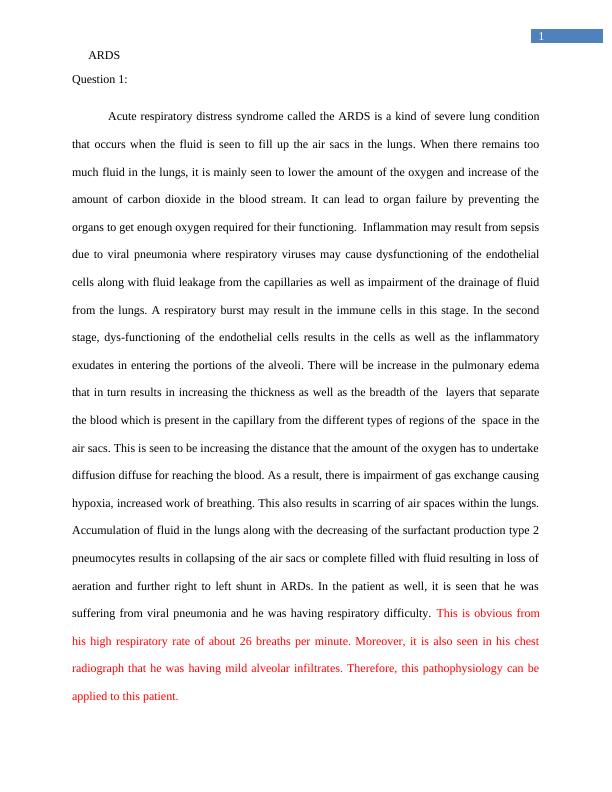Acute Respiratory Distress Syndrome (ARDS) - Pathophysiology, Management, and pH Changes
The purpose of the assessment is to enable students to demonstrate their knowledge by accurately analysing information in a case study of a critically ill or deteriorating patient.
4 Pages788 Words89 Views
Added on 2023-06-11
About This Document
This article discusses the pathophysiology of Acute Respiratory Distress Syndrome (ARDS), its management using the 5Ps, and the pH changes observed in ARDS patients. The patient's case study is used to explain the pathophysiology of ARDS. The 5Ps of managing ARDS patients are discussed in detail. The article also explains the pH changes observed in ARDS patients.
Acute Respiratory Distress Syndrome (ARDS) - Pathophysiology, Management, and pH Changes
The purpose of the assessment is to enable students to demonstrate their knowledge by accurately analysing information in a case study of a critically ill or deteriorating patient.
Added on 2023-06-11
ShareRelated Documents
End of preview
Want to access all the pages? Upload your documents or become a member.
Nursing Case Study - Clinical manifestation of pneumonia among older patient
|11
|3699
|64
Nursing Intervention for Ineffective Airway Clearance, Impaired Gas Exchange and Dehydration Leading to Fluid Volume Deficit (FVD)
|9
|2314
|218
Alveolar Ventilation-Perfusion Relationships
|5
|1002
|23
Anatomy and Physiology of Bilateral Lower Lobe Pneumonia
|4
|778
|300
Structure and Function of the Respiratory System
|19
|3797
|442
Pneumonia Case Study - Pathogenesis, Nursing Strategies and ABG Analysis
|4
|869
|261


